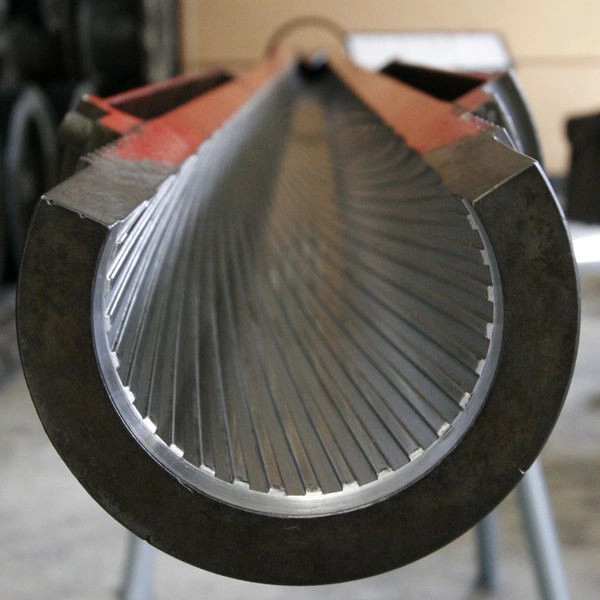I had the opportunity to test out a LabRadar (thanks Keith!) and thought it would be a good opportunity to also try out OBT testing at the same time.
I am always keen to develop and test new methods of load development. Anything I can do to speed up the process of finding optimal loads – it means less component use and more time to practise my shooting and confirm ballistics and fewer testing loads.
OBT – Optimal Barrel Time
Optimal Barrel Time, OBT for short, is a load development method developed by Chris Long.
In summary, OBT centres around shockwaves that travel up and down the barrel whenever you send a round (and a pressure wave) down the barrel. This shockwave actually expands (minutely) the diameter of the barrel when it passes through – the wave causing a radial expansion outwards from the centre.
Ideally, the theory postulates, you want the projectile to leave the crown of the barrel when the shock wave is at its least – meaning that the barrel and crown are the tightest around the projectile – ensuring it leaves perfectly concentric with the barrel and therefore the most repeatable and accurate.
On his site, Chris provides an Excel spreadsheet that calculates these barrel timings, based on the length of the barrel.
Finding an Accurate Load
It what was really my first exploration into load development for someone else, one of the attendees to our recent long-range shooting fundamentals course needed some accurate ammo for his rifle. I knew he could shoot, and his rifle (a Remington 700 tactical SPS 20″) should shoot – but the factory ammo he was running in it just didn’t seem to be doing the job.
The SPS is a 1 in 10 twist rate, so that meant that ideally, we would be using a 170 to 220-grain projectile. Well, I didn’t have any handy, so the 155 Scenar is had to be.
Finally, for the purposes of this exercise, I limited powder options to what I had on hand – that being ADI 2206H, 2208 and 2209.
I loaded up some figures in Quickload, and came up with some options to start with. For this test, I simply utilised the inbuilt weights inside Quickload, but for truly fastidious testing, I would start by taking a case water volume measurement, and confirm the actual bullet weights (and powder burn rate). As it was, the purpose of this test was to see how easily and quickly we could get a decent shooting load for his firearm.
These loads are not for your own use, please. Do your own research instead of just copying something you read online – if you want some assistance, please just get in touch.
Rounds for testing on his rifle on the left (we ended up skipping the 2209 loads, as they were just too compressed. Sighters in the middle, and some loads for my .308 on the right.
With a couple of theoretical loads to test out, it was off to the range we went!
The LabRadar
There are actually plenty of reviews for the LabRadar already out there – so I don’t really need to add yet another.
Basically, though, I really liked the idea of getting chronograph data, without having to go out in front of the firearm (traditional chronographs), nor having to attach something to the front of my rifle to get data (my Magnetospeed) which would, at the same, shift POI and mean I couldn’t confirm velocity and zero my rifle at once.
I had already read up some tips and tricks online regarding the LabRadar, and the setup was really easy.
Tripod down, aim the LabRadar at the target, set up next to it, and shoot!
The unit performed perfectly, capturing shots from both suppressed and muzzle braked firearms.
The resulting data is twofold.
Firstly, for each string shot, the unit provides a summary page.
This provides a pile of stats – average velocity, SD and so on. Acceptably low SD right there!
In addition to the summary, the raw data (of sorts) is also captured. This is the velocity as it decreases over distance.
Very interesting if you are wanting to know actually velocity for things like terminal ballistics performance.
Certainly, the results we got would indicate that we had found a low SD load that was going to shoot well. But, as I imagine you are wondering, what did the groups actually look like?
The Results
100 meters. 5 shot groups. Seems like the 2208 may be the go!
Here it is then. That is a totally theoretical load – totally prior to any kind of additional tweaking (that would actually be quite easy to do). Not quite touching, but considering it’s a standard 700 action and barrel, with a less than ideal shooting position, that’s quite acceptable.
Considering the last time it wouldn’t shoot under 2 moa – it’s certainly an improvement! It also has really piqued my interest in the OBT system. This load meets the requirements of the shooter I created it for. At this point, he is happy to shoot as is, but with a few simple tweaks, we could make it even better.


